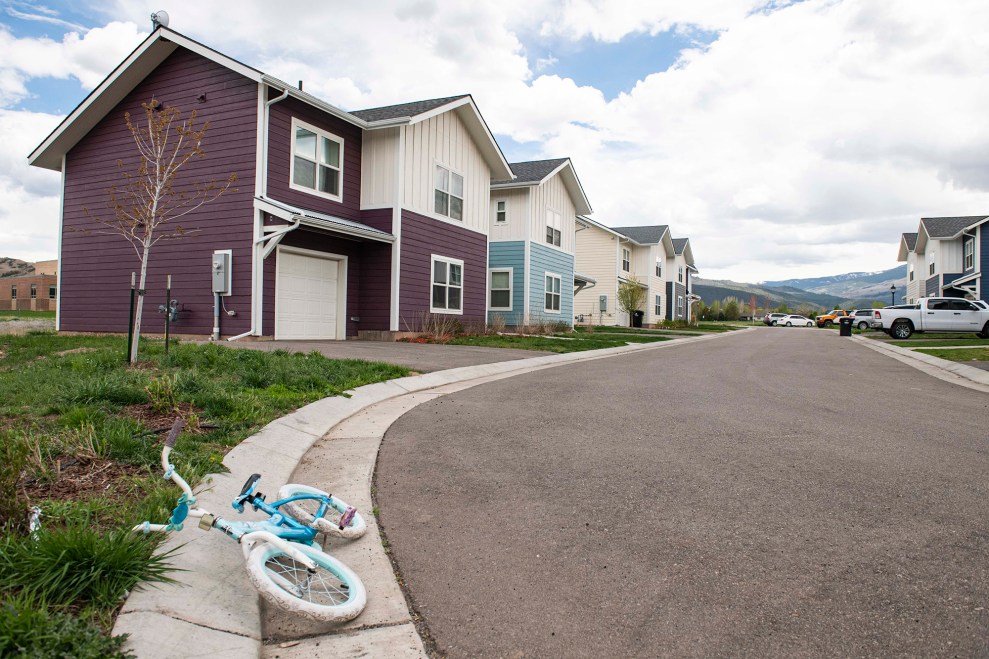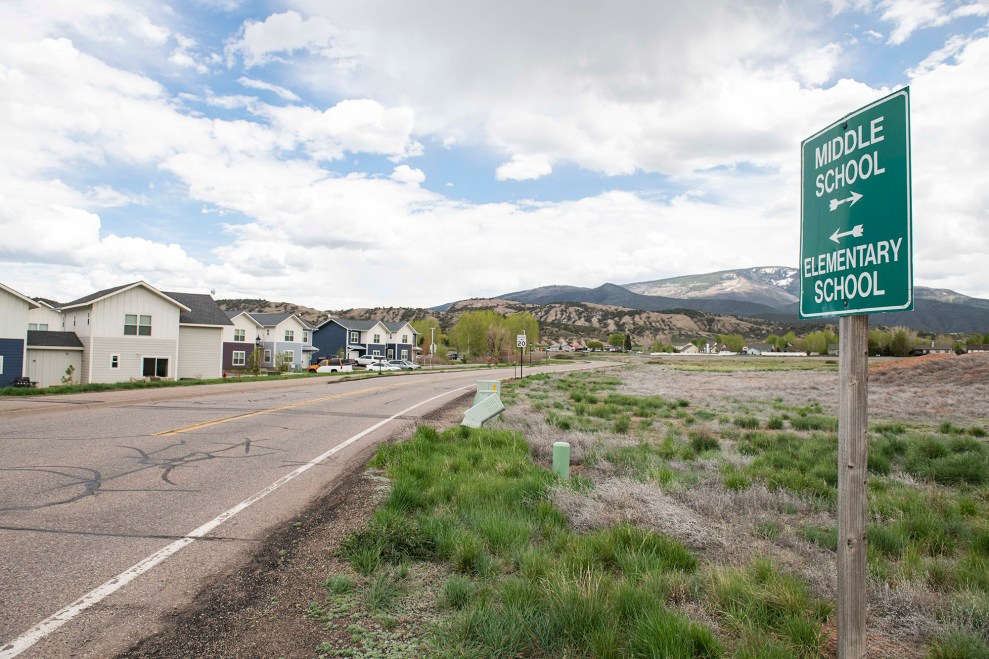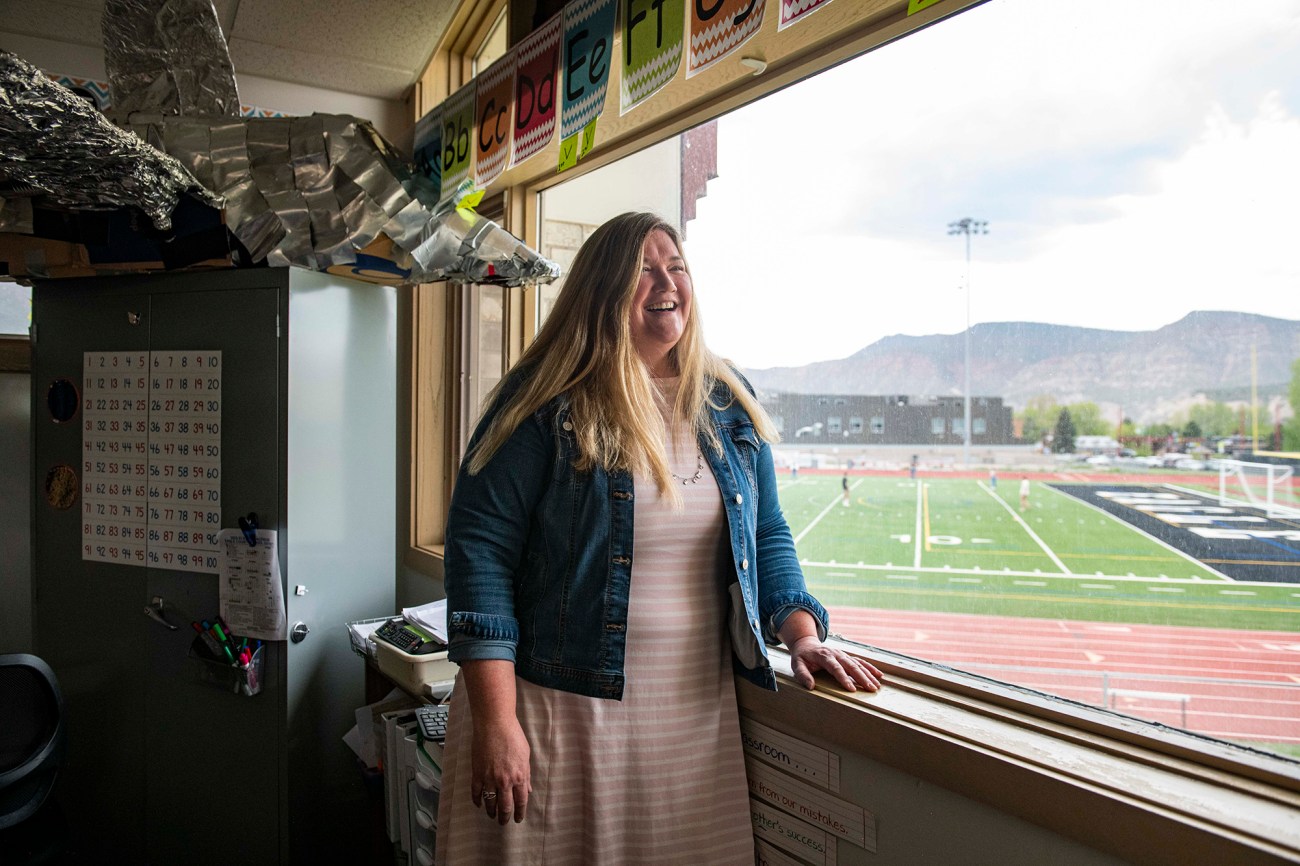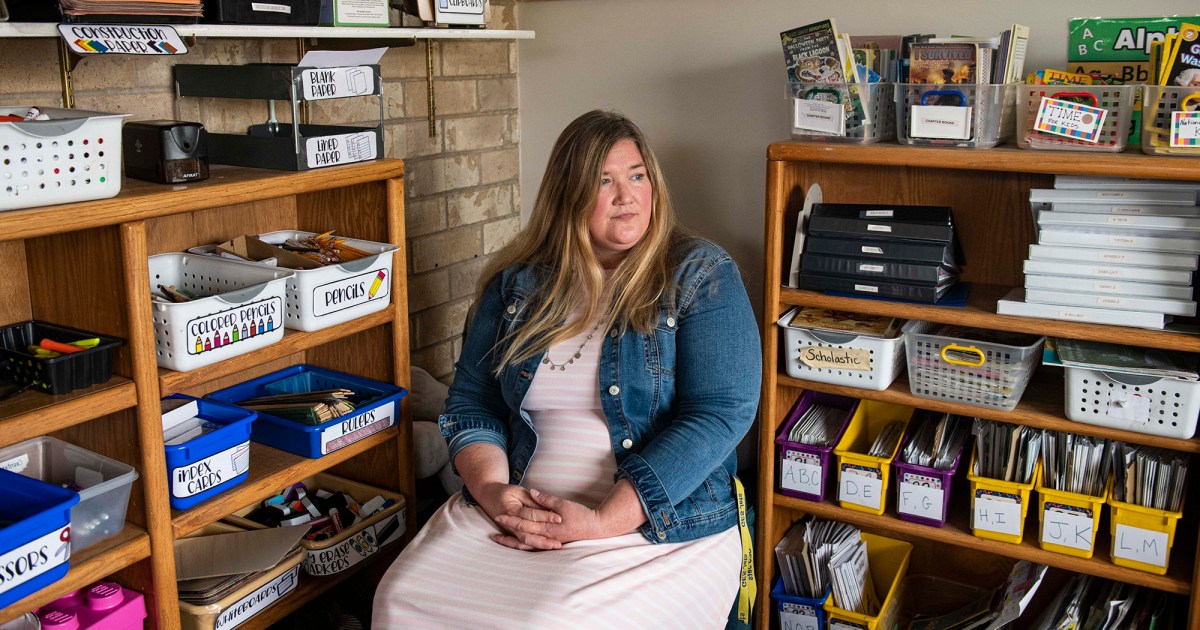
The real crisis driving America's teacher shortage
What happens when teachers can only afford to live hours away from schools?
The Real Crisis Driving America’s Teacher Shortage
What happens when teachers can only afford to live hours away from schools?
EMILY TATE SULLIVANSEPTEMBER 6, 2023
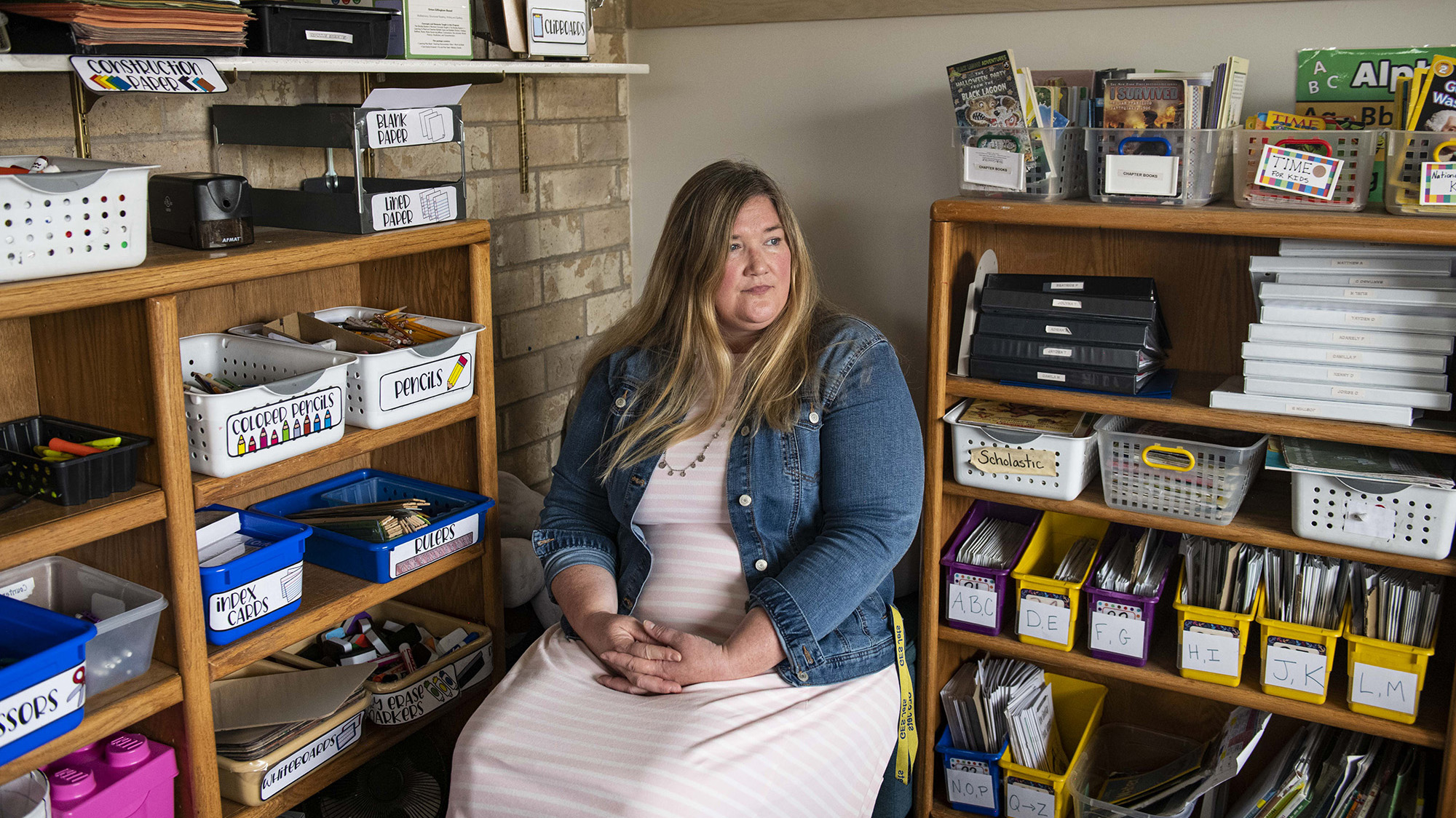
Carrie Rogers, a teacher at Gypsum Elementary School, in her classroom. Kelsey Brunner/EdSurge
This article was co-published with EdSurge. EdSurge is a nonprofit newsroom that covers education through original journalism and research. Sign up for their newsletters.
Carrie Rodgers gestures toward the silver medallion sitting atop her fridge, then waves it off.
It’s nothing really, she shrugs.
Still, she reaches for the disc and sets it on the kitchen counter for a closer look.
Two roofs and a pair of windows are etched into its center. Encircling the outline of those homes, the badge reads, “MAKE COLORADO AFFORDABLE 2022,” and below it, “IN GRATITUDE FOR YOUR LEADERSHIP.”
Rodgers hands it over, almost scoffing at the inscription.
Perhaps if things had gone differently for her, the token would register pride rather than bitterness. Instead, its presence in her home is like one of those trite souvenirs that says, “I went to the Bahamas and all I got was this lousy T-shirt.”
Rodgers, a teacher who works with disabled kids, had become outspoken about the housing crisis plaguing her community. She organized and fought for a statewide ballot measure to ease the housing burden on Colorado residents like her. She even rolled up her sleeves and helped build some of the low-cost homes being constructed for employees in her school district.
She entered a lottery—twice—for the chance to purchase one of those new units.
She tried, and she tried, and she tried.
And all she got was this lousy medallion.

Carrie Rogers’ Colorado Prop 123 badge alongside her teaching materials at her rental home in Eagle, Colorado.
Kelsey Brunner/EdSurge
Rodgers, 47, teaches in Eagle County School District. She moved to the area a decade ago from Baltimore, where she was burned out at work, navigating a breakup, and struggling to pay her bills.
She was in search of more balance in her life and hoped to find it in Eagle County, a rural mountain community where her sister lived, just over 100 miles west of Denver.
She got a job with the school district and took it, initially moving in with her sister until she could find a place of her own. But when it came to securing housing, she quickly found that “rural,” in this valley, is not synonymous with affordable, especially with two premier ski resorts—Vail and Beaver Creek—just a few miles down the road.
As she looked for a place to rent, Rodgers found that roommates were necessary and additional jobs non-negotiable. At first, and for a while, it was worth it, if only for the lifestyle—hiking, camping, kayaking, paddleboarding, and snowshoeing.
“I can literally walk out my door and go hiking for endless miles,” Rodgers says. That’s not hyperbole. She’s seen elk grazing just outside her window, which looks out onto aspen trees and snow-capped mountains in the distance.
In those ways, it is every bit the life Rodgers envisioned for herself when she made the decision to move here in 2013.
Yet the awe she experiences during the day is often shattered by sleepless nights, as she wonders and worries about how she’ll cover upcoming bills.
Rodgers has to supplement her $59,000 teaching income to cover her basics—a practice that has long been the reality for teachers in America. She waits tables at a restaurant and wine bar in town, teaches at an after-school program, coaches softball, and occasionally takes on babysitting and dog-sitting gigs.
“I don’t have the time to appreciate and enjoy the lifestyle,” she says. “I don’t have time to do laundry.”
Some months, even with her extra income, she still doesn’t have enough to cover rent. When things have gotten bad, Rodgers has sold household appliances like her television, pawned off prized possessions, and begged for odd jobs that would earn her quick cash.
In the last couple of years, Rodgers’ resolve has been worn down. She’s pushing 50 but juggling a handful of jobs. Her blonde hair is turning silver, yet she’s living with a roommate—as she has for much of her adult life. If she’s ever going to find the stability she craves, she figures she’ll need to buy a house, and she can’t do that here, where the median sales price for a home now exceeds $1 million.
“I’m done sacrificing,” Rodgers told me in May. “I love it here, but I don’t see a future.”
Housing has long been a barrier in the valley. Nearly half of properties are vacation homes that sit vacant for most of the year or operate as short-term rentals for visitors. The result is low inventory and high prices that create financial strain for the hourly workers who support tourism in the area, as well as the teachers, police officers, firefighters and nurses who make the region feel less like a hospitality engine and more like home to year-round residents.
“There are plenty of jobs. The hardest part is to get housing.”
Recently, as housing prices have continued to soar throughout the United States, that barrier has become insurmountable for many, with teachers and school staff moving out of the district at alarming rates, leaving students, families, and the staff who stay without their lifeblood, left to pick up the pieces and rebuild until another crop of employees decides next year that it is time for them, too, to move on.
Eagle County is a dramatic example of what many say is a national crisis. The evidence is everywhere. In Arizona, a school district is building tiny homes to house its teachers. In Texas, a district purchased a motel to rent out the rooms as staff housing. In California, district leaders have asked families to rent spare rooms in their homes to educators struggling to find a place to live.
Inflation has caused the price of basic goods and services to go up, and in no industry has that been more extreme than housing, for both buyers and renters. Meanwhile, teacher salaries have remained mostly stagnant (or where they’ve increased, it’s been insufficient to match the rising costs of meeting basic needs). What many communities are finding is that when affordable housing is scarce, so are teachers.


